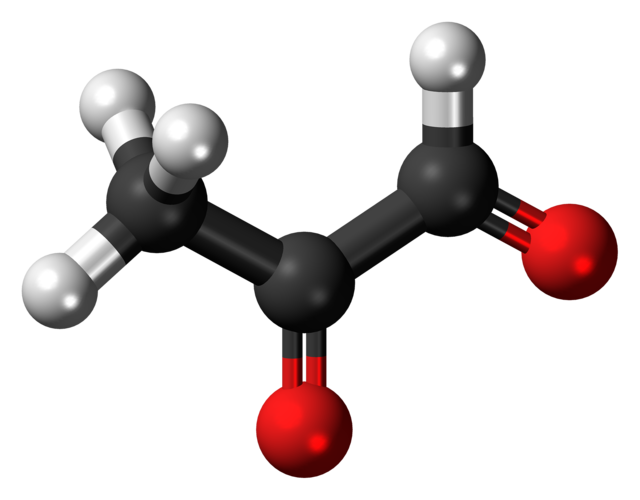
by genesis | Mar 15, 2025 | New Zealand Manuka Honey
When browsing Mānuka honey jars, you’ve likely noticed labels like “550 MGO” or “700 MGO”—but what does MGO really mean? MGO stands for Methylglyoxal, the naturally occurring compound behind Mānuka honey’s renowned antibacterial properties. This guide demystifies MGO and explains why high levels, like Genesis Honey Co.’s 700+ MGO honey, signify potent health benefits.
Chemistry 101: Understanding MGO
Methylglyoxal is a naturally occurring compound found in various foods but uniquely abundant in Mānuka honey. It develops naturally from dihydroxyacetone (DHA), a compound found in the nectar of the Mānuka flower, maturing within the honey over time. Its discovery by Dr. Peter Molan revealed the mystery behind Mānuka’s exceptional antibacterial activity.
How MGO Powers Antibacterial Action
MGO combats harmful bacteria by interfering with their proteins and DNA, effectively neutralizing them. Unlike traditional honey, Mānuka honey maintains its potency due to MGO’s stability, providing lasting antimicrobial effects. Simply put, if regular honey’s antibacterial power is like a gentle beer, high-MGO Mānuka honey delivers the punch of a fine whiskey—potent and highly effective.
MGO, UMF, and Other Ratings Explained
While UMF (Unique Mānuka Factor) ratings include MGO along with other components like leptosperin and DHA, MGO specifically quantifies the honey’s antibacterial potency. Here’s a quick conversion reference:
- UMF 5 ≈ MGO 83
- UMF 10 ≈ MGO 263
- UMF 15 ≈ MGO 514
- UMF 20 ≈ MGO 829
These metrics help consumers easily gauge the strength and quality of Mānuka honey.
Is Higher MGO Always Better?
Generally, yes—higher MGO levels (like 700+) signify stronger medicinal properties, particularly useful in wound care or infection management. For daily wellness, moderate MGO levels around 250+ may suffice. Ultra-high MGO honeys like Genesis’s 700+ are designed for maximum therapeutic benefits, though they may exhibit a stronger, more medicinal flavor profile due to concentration.
Validating MGO Levels
Authenticity is critical. Trustworthy companies rigorously test each honey batch for accurate MGO content, ensuring consumer confidence. Beware of synthetic MGO additives used by unscrupulous sellers. Genuine, certified Mānuka honey provides natural, potent antibacterial effects.
Frequently Asked Questions
Is MGO the same as UMF?
Not exactly. MGO measures the specific antibacterial compound, whereas UMF provides a broader quality rating that includes MGO and additional markers.
What level of MGO is beneficial?
For everyday health, MGO 100+ is sufficient. For enhanced health support, aim for 250+. Therapeutic uses often call for 500+ or higher.
Does Mānuka honey with 100 MGO have benefits?
Yes, it offers mild antibacterial benefits above regular honey, suitable for daily wellness rather than targeted medicinal use.
Why not take pure Methylglyoxal directly?
Pure MGO alone would be harsh and potentially unsafe. Mānuka honey naturally delivers MGO alongside beneficial nutrients, making it safe and effective.
Why Choose Genesis Honey Co.?
Our 700+ MGO Mānuka honey is rigorously tested, often surpassing the minimum potency standard. We prioritize transparency, ensuring you receive the highest quality honey with proven health benefits.
Conclusion
“MGO is the magic in Mānuka.” When choosing high-MGO honey, you’re investing in an exceptional, naturally potent resource unique to genuine Mānuka honey. Always check the MGO number—especially ours—to experience the real difference.
Experience authentic, high-potency Mānuka honey—shop Genesis Honey Co. today!

by genesis | Mar 15, 2025 | Manuka Honey NZ
With antibiotic-resistant infections rising globally, natural alternatives like Genesis Honey Co.’s 700+ MGO Mānuka honey are increasingly valued for their powerful antibacterial properties. Often called ‘nature’s antibiotic,’ Mānuka honey has garnered attention from researchers and healthcare professionals alike for its unique antimicrobial abilities.
The Science Behind Mānuka Honey’s Antibiotic Properties
Mānuka honey’s standout antibacterial effects come from its high levels of methylglyoxal (MGO), a compound proven effective against many bacterial strains. Unlike regular honey, Mānuka honey exhibits powerful non-peroxide antibacterial activity, allowing it to combat antibiotic-resistant bacteria, including MRSA and certain superbugs, as supported by numerous scientific studies.
Topical Uses: Wound Care and Skin Health
Applying Mānuka honey topically has become increasingly common for minor wounds, burns, and skin infections. Hospitals worldwide have adopted medical-grade Mānuka honey dressings to aid healing and prevent infection. At home, applying a thin layer of high-quality Mānuka honey on minor cuts, scrapes, or acne spots can effectively reduce the risk of infection and accelerate healing.
Internal Uses: Everyday Wellness
- Sore Throat and Cough Relief: A teaspoon of Mānuka honey soothes throat irritation and reduces coughing naturally, offering quick symptomatic relief.
- Digestive Health: Incorporating Mānuka honey daily can help balance gut flora, soothe minor digestive inflammation, and even inhibit harmful bacteria like H. pylori.
- Oral Hygiene: Its antibacterial properties make Mānuka honey effective in oral hygiene routines, potentially reducing plaque-forming bacteria and soothing minor mouth ulcers.
Safe Usage and Precautions
- Do Not Replace Prescribed Antibiotics: For severe or serious infections, always follow your healthcare provider’s recommendations.
- Moderation: Typically, 1-2 teaspoons per day is adequate for general wellness.
- Infant Caution: Avoid honey for children under one year old due to the risk of botulism.
- Sugar Content: Monitor intake, particularly if managing diabetes or other blood sugar conditions.
Frequently Asked Questions
Can Mānuka honey treat infections?
Mānuka honey can effectively manage minor topical infections and support internal health. However, it should complement rather than replace traditional medical treatments for serious infections.
How do you apply Mānuka honey to wounds?
Clean the wound first, apply a thin layer of medical-grade honey, and cover with a sterile dressing. Replace daily until healed.
What strength of Mānuka honey is medicinal?
700+ MGO (UMF 18+) provides powerful antibacterial benefits suitable for both topical and internal health.
Does heat affect Mānuka honey’s antibacterial properties?
Yes, excessive heat can reduce some beneficial enzymes, although MGO itself is relatively stable. Avoid boiling; instead, use it at moderate or cool temperatures.
Why Choose Genesis Honey Co.?
Not all Mānuka honey is created equal. Genesis Honey Co. guarantees purity and potency through rigorous testing, ensuring our 700+ MGO honey delivers reliable antibacterial and health-promoting benefits you expect.
Conclusion
Integrating Mānuka honey into your daily life offers impressive health benefits with minimal risk. Whether it’s wound care, gut wellness, or immunity support, high-quality Mānuka honey is an invaluable natural addition to your health routine.
Experience the antibiotic power of Genesis Honey Co.’s 700+ MGO Mānuka Honey—Shop Now!

by genesis | Mar 15, 2025 | Manuka Honey NZ
Natural remedies for digestive health are gaining popularity as people seek gentle yet effective ways to ease conditions like acid reflux, stomach ulcers, and irritable bowel syndrome (IBS). Could a spoonful of honey a day keep the gastroenterologist away? Emerging research suggests Genesis Honey Co.’s 700+ MGO Mānuka honey might indeed offer substantial benefits for your gut.
Fighting Ulcers and H. pylori
Stomach ulcers are commonly linked to infections by the bacterium Helicobacter pylori (H. pylori). Research indicates that Mānuka honey effectively inhibits H. pylori growth in laboratory studies. A study involving 294 participants found regular honey consumption correlated with reduced rates of H. pylori infection. While honey alone isn’t a standalone treatment for ulcers, it can serve as a beneficial complementary measure alongside medical treatments advised by healthcare providers.
Promoting Beneficial Gut Bacteria
Mānuka honey acts as a powerful prebiotic, nourishing beneficial gut bacteria. Like other raw honeys, it contains natural oligosaccharides that feed friendly gut flora such as bifidobacteria. Additionally, Mānuka honey’s strong antimicrobial action may balance gut flora by suppressing harmful bacteria, such as Clostridium difficile (C. diff), promoting overall digestive harmony.
Soothing Digestive Inflammation
For those experiencing digestive inflammation from gastritis or inflammatory bowel diseases (IBD) like Crohn’s or ulcerative colitis, Mānuka honey’s anti-inflammatory properties can help soothe and heal irritated gut linings. While it isn’t a cure for chronic digestive disorders, its natural anti-inflammatory effects may provide significant symptomatic relief and enhance overall comfort.
How to Use Mānuka Honey for Digestive Health
- Morning Ritual: Consume 1 teaspoon of Mānuka honey on an empty stomach, followed by warm water to calm and nourish your digestive tract.
- Aloe Vera Combo: Blend Mānuka honey with aloe vera juice for enhanced gut-soothing benefits.
- Probiotic Foods: Sweeten probiotic-rich yogurt or kefir with honey to amplify gut-friendly benefits.
- Acid Reflux Relief: A teaspoon of Mānuka honey can coat the esophagus, potentially reducing acid reflux symptoms. Mixing it with apple cider vinegar may further enhance digestive relief.
Frequently Asked Questions
Is Mānuka honey good for acid reflux?
Yes, its soothing texture can coat and calm throat and stomach irritation, but results may vary individually.
How does Mānuka honey help IBS?
Mānuka honey can potentially balance gut flora and reduce inflammation associated with IBS. However, IBS sufferers on low-FODMAP diets should use caution due to honey’s fructose content.
Can Mānuka honey cause botulism?
Botulism risk exists only for infants under one year old. Adults and older children can safely enjoy honey.
How much Mānuka honey should I take for ulcers?
Typically, 1-2 teaspoons daily, ideally before meals. Always consult your doctor for personalized guidance.
Scientific Credibility & Caution
While promising, the benefits of Mānuka honey for digestive health are best viewed as complementary rather than primary treatments. Continuing ongoing medical care, including prescribed medications for serious digestive issues, is crucial. Further human clinical trials are needed to fully validate Mānuka honey’s digestive health benefits.
The Genesis Honey Co. Difference
Genesis Honey Co. ensures genuine, high-MGO Mānuka honey, free from adulteration. Our premium quality guarantees the potency necessary for potential gut health benefits, unlike lower-quality or blended products.
Conclusion
Gut wellness involves a complex balance, but incorporating Mānuka honey into your diet is a simple, delightful step with potential benefits. Enjoy this natural superfood while supporting your digestive health.
Discover Genesis Honey Co. today and enhance your gut wellness naturally!

by genesis | Mar 15, 2025 | Mānuka Honey Skin Health, New Zealand Manuka Honey
Genesis Honey Co.’s 700+ MGO Mānuka honey is renowned not only for its health benefits but also for its versatile use in daily life. If you’ve wondered how best to incorporate this superfood into your routine, here are ten creative and easy ways to enjoy Mānuka honey every day.
1. Straight Off the Spoon in the Morning
Kickstart your day by consuming one teaspoon of Mānuka honey on an empty stomach. Many wellness experts believe it supports gut health and boosts energy levels naturally.
2. Enhance Your Tea or Warm Lemon Water
Stir Mānuka honey into your favorite herbal tea or warm lemon water (avoid boiling temperatures to preserve beneficial enzymes). It’s perfect for daily detoxification or soothing relaxation.
3. Natural Toast or Oatmeal Topping
Replace processed jams or sugary toppings by spreading Mānuka honey on whole-grain toast, oatmeal, or pancakes. It sweetens naturally and provides extra nutritional benefits.
4. Smoothie Supercharge
Add a spoonful of Mānuka honey to your smoothies or protein shakes. It sweetens naturally and masks the taste of greens in smoothies, while providing additional health benefits.
5. Homemade Dressings & Sauces
Include Mānuka honey in salad dressings, marinades, and sauces. It adds a delightful sweet-savory balance, enhancing dishes like grilled vegetables, chicken, or seafood.
6. Healthy Baking Sweetener
Use Mānuka honey in no-bake recipes such as energy balls, granola bars, and healthy desserts. Although prolonged baking heat can reduce its enzymes, its unique taste remains delightful.
7. Weekly Skincare Ritual
Incorporate Mānuka honey into your skincare routine once weekly. Apply it as a hydrating mask or gentle cleanser, leaving your skin refreshed and glowing.
8. Daily Sore Throat Relief
For minor throat irritations or daily vocal strain, take a teaspoon of Mānuka honey mixed with a dash of cinnamon. This soothing combination maintains throat health.
9. Natural Pre-Workout Boost
Replace artificial pre-workout gels with a teaspoon of Mānuka honey. Its natural sugars and minerals provide a quick, effective energy boost before physical activity.
10. First Aid for Minor Cuts and Burns
Keep a jar handy in your medicine cabinet. Applying a thin layer of Mānuka honey to minor wounds or burns after cooling can speed healing, thanks to its powerful antibacterial properties.
Daily Usage Tips
- Moderation: One to two teaspoons daily is ideal for health benefits.
- Sugar Awareness: For diabetics, integrate honey with fiber-rich foods to balance sugar absorption.
- Optimal Timing: For gut health benefits, consume honey on an empty stomach and wait at least 15 minutes before eating or drinking.
Frequently Asked Questions
What is the best time to take Mānuka honey? Morning for energy or bedtime in tea for immunity; choose according to your preference and purpose.
Do I need to refrigerate Mānuka honey? No, store in a cool, dry place. Refrigeration can accelerate crystallization.
Can I mix Mānuka honey with apple cider vinegar? Absolutely! Mix one tablespoon apple cider vinegar with one teaspoon honey in warm water for digestive health.
How long does Mānuka honey last? Stored properly, it can last years. Crystallization is natural—simply warm gently to restore liquidity.
The Genesis Honey Co. Advantage
Genesis Honey Co.’s ultra-premium 700+ MGO Mānuka honey ensures purity and potency, making every daily spoonful impactful. We encourage regular use so you experience maximum health benefits and superior taste.
Conclusion
Challenge yourself to try one new method this week to incorporate Mānuka honey into your daily life. We’d love to hear how you use your Mānuka honey—share your tips in the comments!
Shop Genesis Honey Co. today and elevate your wellness routine!

by genesis | Mar 15, 2025 | New Zealand Manuka Honey
Mānuka Honey vs. Regular Honey vs. Raw Honey: What’s the Difference?
Mānuka honey often grabs headlines due to its premium price and powerful health benefits—but what sets it apart from regular or raw honey? In this guide, we’ll break down the differences, highlighting why Genesis Honey Co.’s 700+ MGO Mānuka honey stands apart as a unique and powerful natural remedy.
Production and Processing: What Sets Each Honey Apart?
Regular Honey
Regular honey typically blends multiple floral sources and may undergo extensive processing, including pasteurization and filtration, which can strip it of beneficial enzymes and pollen. Often mass-produced, regular honey might contain added syrups or sugars, reducing its health benefits.
Raw Honey
Raw honey is unpasteurized, minimally processed, and contains natural enzymes, antioxidants, and pollen. Its processing preserves healthful components, making it superior to highly processed honey in terms of nutrients and health benefits. It’s also widely available locally, making it accessible.
Mānuka Honey
Originating primarily from the Mānuka bush native to New Zealand and Australia, Mānuka honey is known for its high methylglyoxal (MGO) content, a potent antibacterial compound. Mānuka honey also uniquely contains leptosperin, further authenticating its genuine source and exceptional antibacterial strength. Due to its rarity and limited seasonal availability, Mānuka honey commands a higher price.
Unique Components
- Regular/Raw Honey: Antibacterial mainly due to hydrogen peroxide, produced by the glucose oxidase enzyme.
- Mānuka Honey: Distinctly rich in methylglyoxal (MGO), providing potent antibacterial power effective even against antibiotic-resistant bacteria.
Comparative Health Benefits
| Feature |
Regular Honey |
Raw Honey |
Mānuka Honey (700+ MGO) |
| Taste |
Sweet, mild |
Richer, varies |
Herbal, earthy, slightly bitter |
| Uses |
Sweetener, general wellness |
Antioxidants, allergy relief |
Medicinal use, strong antibacterial effects |
| Price |
$ (Low) |
$$ (Moderate) |
$$$ (Premium) |
| Notable Compounds |
Hydrogen peroxide |
Enzymes, pollen, antioxidants |
MGO, leptosperin, high antibacterial activity |
| Common Uses |
Everyday sweetener |
Wellness, allergies, soothing cough |
Wound healing, immunity, skincare |
Taste & Usage Differences
Regular honey typically has a mild, sweet taste ideal for daily sweetening. Raw honey’s taste profile varies by floral source—often richer and more complex than regular honey. Mānuka honey stands apart with its distinctive earthy flavor, slightly bitter undertones, and herbal notes. It’s often enjoyed straight or paired with robust foods like cheeses and savory dishes.
Price & Value Comparison
- Regular Honey: Economical, widely available.
- Raw Honey: Mid-priced, offering good nutritional value.
- Mānuka Honey: Premium-priced due to rigorous testing, limited seasonal harvest, and high medicinal potency.
Certified Mānuka honey’s cost reflects its intensive verification processes and guaranteed purity, ensuring you receive genuine therapeutic benefits.
Frequently Asked Questions
Is raw honey as good as Mānuka?
Raw honey is beneficial, but Mānuka is uniquely powerful due to its high MGO content, especially effective for antibacterial purposes.
Can I use Mānuka honey in cooking?
Yes, but minimal heat is best. High temperatures might reduce some beneficial enzymes; adding it post-cooking retains most health properties.
What does Mānuka honey taste like?
It has a richer, herbal, slightly bitter flavor compared to standard honey, with deep umami notes.
How much Mānuka honey should I consume daily?
One to two tablespoons daily for health benefits, balancing sugar intake accordingly.
Why Choose Genesis Honey Co.?
Genesis Honey Co. prioritizes purity and potency, ensuring our 700+ MGO Mānuka honey delivers unmatched medicinal quality. Ethically sourced from pristine locations, our honey undergoes meticulous testing to maintain exceptional purity and potency.
Conclusion
Whether used for health, skincare, or gourmet dishes, the unparalleled quality of Genesis Honey Co.’s 700+ MGO Mānuka honey sets it apart. Embrace the power of Mānuka honey and experience its unique benefits firsthand.
Discover the Genesis Honey Co. difference today!




Recent Comments